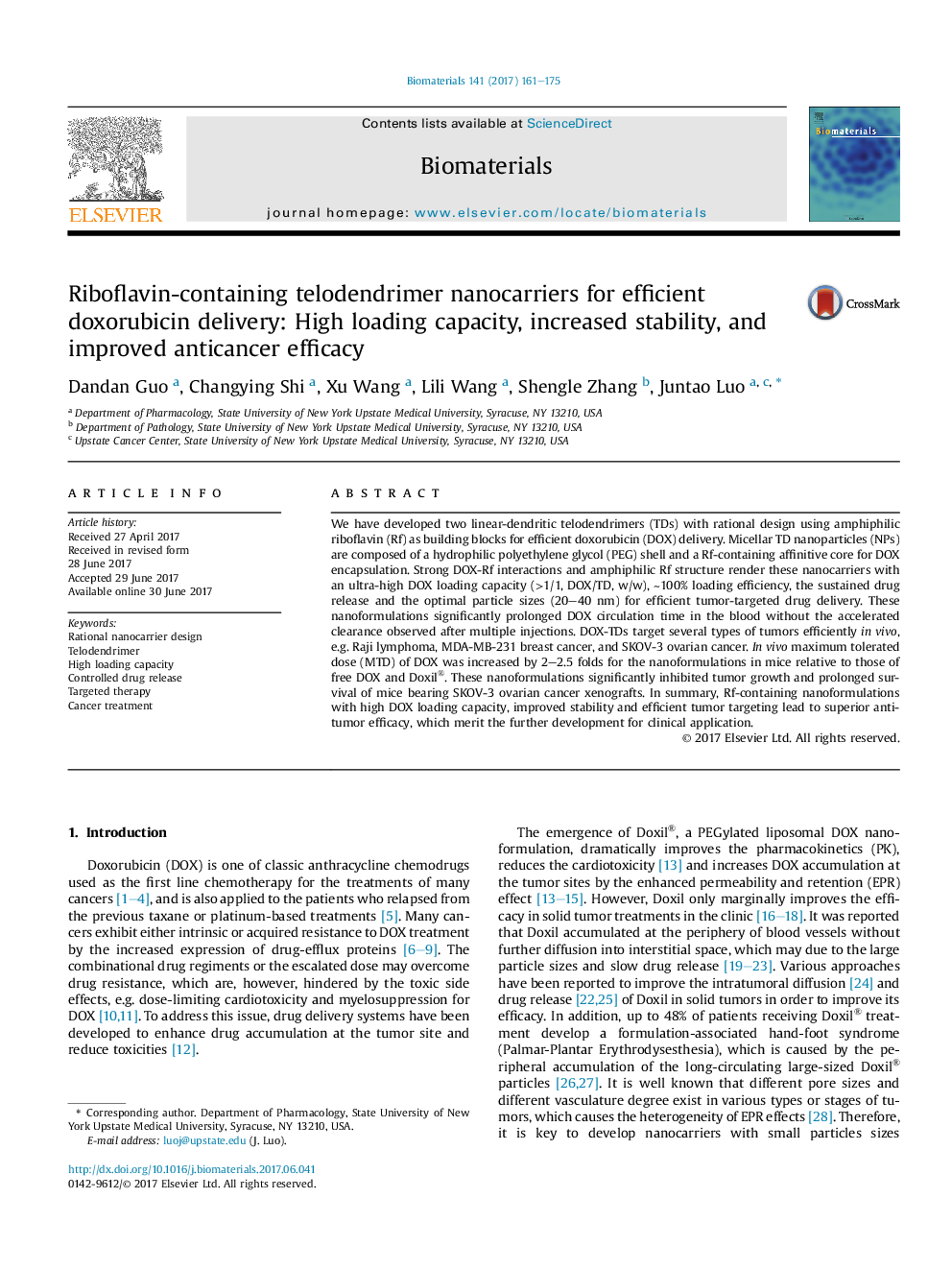| Article ID | Journal | Published Year | Pages | File Type |
|---|---|---|---|---|
| 6450606 | Biomaterials | 2017 | 15 Pages |
We have developed two linear-dendritic telodendrimers (TDs) with rational design using amphiphilic riboflavin (Rf) as building blocks for efficient doxorubicin (DOX) delivery. Micellar TD nanoparticles (NPs) are composed of a hydrophilic polyethylene glycol (PEG) shell and a Rf-containing affinitive core for DOX encapsulation. Strong DOX-Rf interactions and amphiphilic Rf structure render these nanocarriers with an ultra-high DOX loading capacity (>1/1, DOX/TD, w/w), â¼100% loading efficiency, the sustained drug release and the optimal particle sizes (20-40 nm) for efficient tumor-targeted drug delivery. These nanoformulations significantly prolonged DOX circulation time in the blood without the accelerated clearance observed after multiple injections. DOX-TDs target several types of tumors efficiently in vivo, e.g. Raji lymphoma, MDA-MB-231 breast cancer, and SKOV-3 ovarian cancer. In vivo maximum tolerated dose (MTD) of DOX was increased by 2-2.5 folds for the nanoformulations in mice relative to those of free DOX and Doxil®. These nanoformulations significantly inhibited tumor growth and prolonged survival of mice bearing SKOV-3 ovarian cancer xenografts. In summary, Rf-containing nanoformulations with high DOX loading capacity, improved stability and efficient tumor targeting lead to superior antitumor efficacy, which merit the further development for clinical application.
